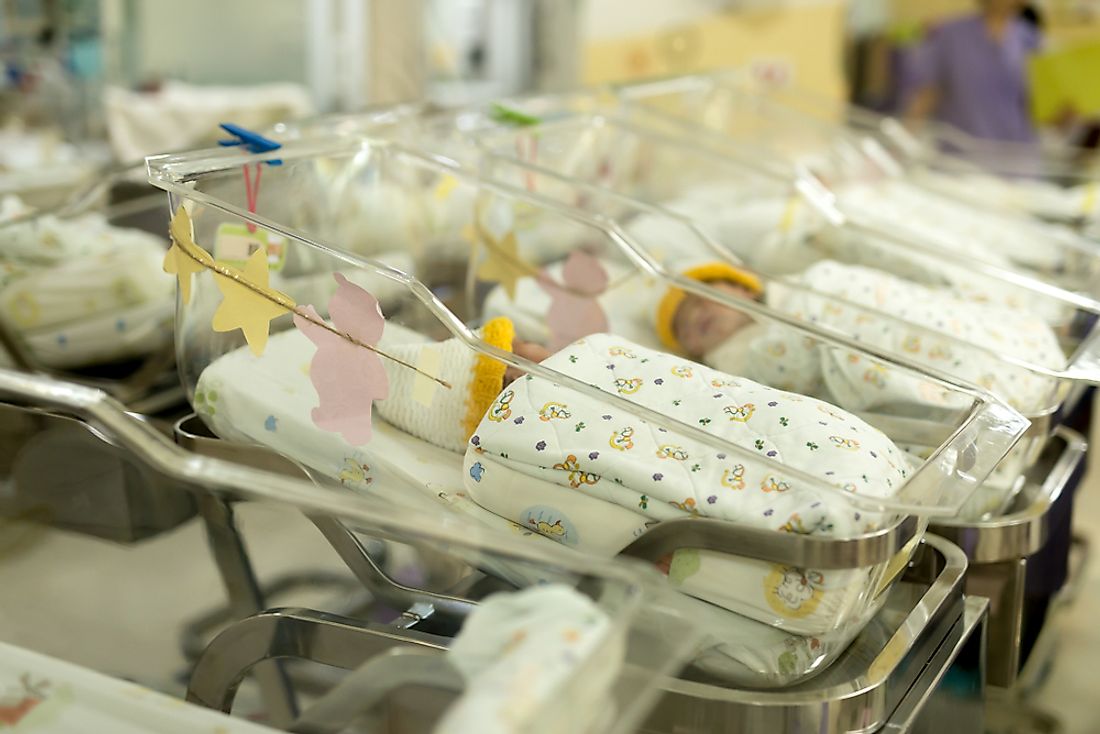Which Countries Have the Highest Birth Rates in Europe?

The TFR or total fertility rate is defined by WHO as the total number of children likely to be born to a woman during her lifetime if she were subject to the prevailing rate of age-specific fertility in the population. The TFR is falling in most parts of the world with the greatest decline seen in Europe.
Several factors contribute to the low fertility rates in European countries. One of the biggest reasons is the change in the social role of women. The increasing cost of having children also discourages many couples from having them. Some also choose to lead childfree lives to save the planet's resources or achieve their own goals in life.
While nearly all the countries in Europe exhibit the trend of decreasing fertility rates, some countries are more fertile than the others.
European Countries by Birth Rate
1. France
With an average of 1.92 live births per woman, France holds the title of being Europe's most fertile country. However, that does not mean that the fertility rates in France are increasing. On the contrary, it is just the opposite. 767,000 babies were born in the country in 2017 which is 17,000 fewer than that in 2016, a fall of 2.1%. The age of French mothers is also steadily rising. The average French woman now chooses to have her first child at 30.6 years compared to 29.8 ten years ago. The aging population of France is also at an all-time high creating a serious socioeconomic issue as a smaller "young" workforce has to support a growing band of pensioners. A whopping 19.6% of the French population comprises people aged over 65.
2. Sweden
Sweden ranks second in this list with an average of 1.85 live births per woman. However, like France, Sweden is also experiencing a fall in fertility rates. In 2014, the fertility rate in the country was 1.88. Sweden has some of the best family policies in Europe. Generous leaves are granted to Swedish parents of newborns. Both parents are granted leaves in the country. Low-cost childcare also encourages childbirth. The country even offers state-funded IVF treatments to its citizens.
3. Ireland
Ireland has the third-highest fertility rate in Europe. An average of 1.81 live births per woman was recorded in 2016 in the country. However, the Irish fertility rate has also been falling steadily in recent years. The fertility rate in the country was as high as 3.85 in 1970. In 2012, the rate was 1.98 live births per woman.
4. Denmark
While it is the fourth most fertile country in Europe, the birth rate among Danish women is still low. The fertility rate in the country is 1.79 live births per woman. While 65,000 children were born in Denmark in 2008, only 57,916 births took place in 2012. Studies show that the rate of growth of the Danish population is not enough to maintain the current population. One in five couples in the country chooses to be childfree or end up childless.
5. United Kingdom (UK)
The UK has the same fertility rate as Denmark. In 2018, England and Wales recorded 657,076 live births that were a fall of 3.2% from 2017, and down by 10% from 2012. The figures also show that the fertility rate of women born outside the UK has also fallen in the country. The birth rate in the UK was at its peak in 1947 and it has dropped by around 45.9% since then.
6. Iceland
With an average of 1.74 live births per woman, Iceland has the fifth-lowest fertility rate in Europe. Only four decades back, the country had a fertility rate of 2.9 children per woman. Although the number of births is decreasing in this island country, the population is living longer. Thus, the effective population remains nearly the same. However, that might change in the future as fertility rates dip lower and lower, the population is also expected to shrink.
Implications Of Low Fertility Rates
Low fertility rates in the European nations can have several socioeconomic impacts in the future. As the young population will decrease, the workforce needed to maintain a steady income flow will be insufficient. The aged population will increase but it will be difficult to sustain them. Also, it will become increasingly important to import the labor force from other countries. The immigrants might not adopt the European cultures and important elements of such cultures might wane away gradually.
On the other hand, lower fertility rates allow women to follow their career goals with greater freedom. Individualistic goals are more easily achieved in the absence of dependents. Most of the countries with lower fertility rates are the most advanced ones in gender equality, female empowerment, literacy, and prosperity. Another recently developed view is that a lower population puts less burden on the environment and is good for the planet.
The 10 Most Fertile Countries In Europe
| Rank | European Country | Number Of Live Births Per Woman In 2016 |
|---|---|---|
| 1 | France | 1.92 |
| 2 | Sweden | 1.85 |
| 3 | Ireland | 1.81 |
| 4 | Denmark | 1.79 |
| 5 | United Kingdom | 1.79 |
| 6 | Iceland | 1.74 |
| 7 | Latvia | 1.74 |
| 8 | Norway | 1.71 |
| 9 | Lithuania | 1.69 |
| 10 | Belgium | 1.68 |











